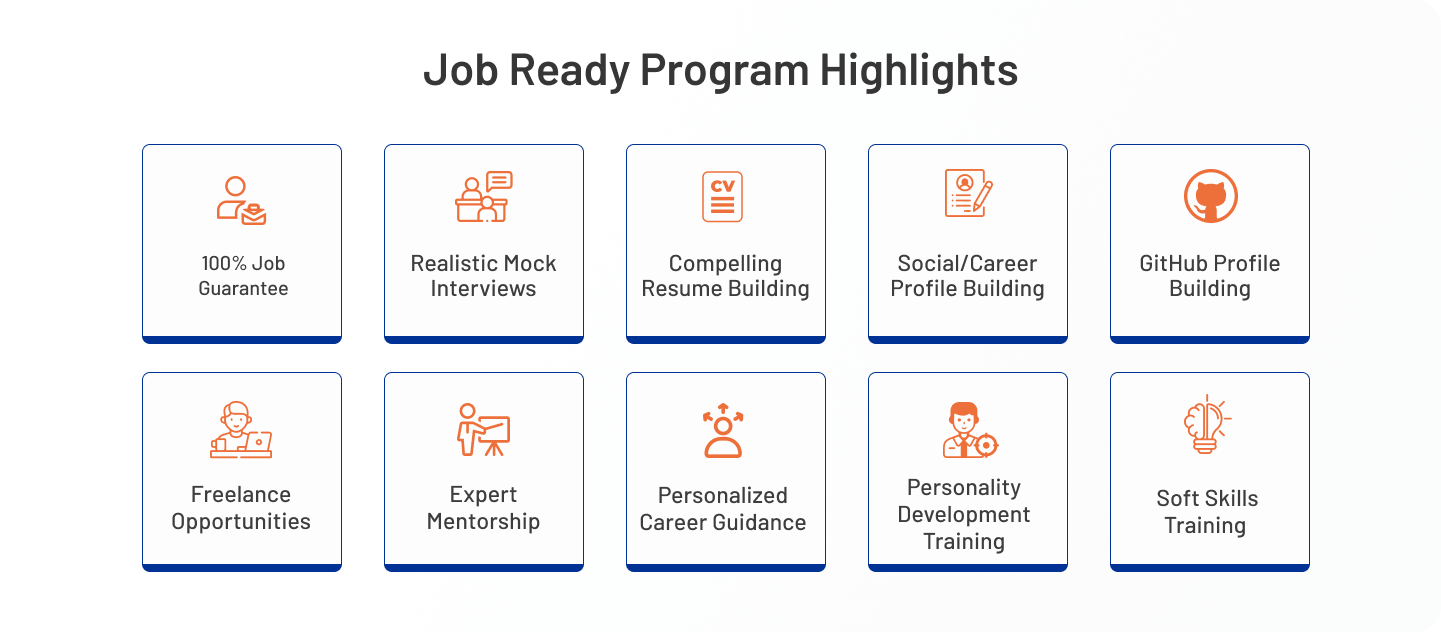Top HTML interview questions and answers for freshers

In preparation for placement season, we understand that you may need assistance practicing for interviews. Therefore, we have decided to provide you with a helping hand by creating a set of 15 commonly asked HTML questions and their answers for freshers.
If you are aspiring to become a web developer, it is crucial to recognize that learning HTML is as important as CSS and Java. Although HTML may seem easier, it is often overlooked. However, you wouldn’t want to miss out on job opportunities by lacking knowledge in HTML.
Hence, utilize this guide to prepare for HTML and reinforce your understanding.
Here are the top 15 html interview questions and answers:
Q 1: What is the purpose of the doctype declaration in HTML?
Ans: The doctype declaration defines the version of HTML that the document is written in. It helps the browser to understand and render the web page correctly.
Q 2: What is the difference between < div > and < span > tags in HTML?
Ans: < div > is a block-level element used to group and structure content, whereas is an inline element used for styling and grouping inline elements.
Q 3: How can you link external CSS stylesheets to your HTML document?
Ans: You can link external CSS stylesheets using the < link > element in the < head > section of your HTML document.
Example: < link rel="stylesheet" href="styles.css" >
Q 4: How to create a hyperlink in HTML?
Ans: To create a hyperlink, you use the < a > (anchor) element with the href attribute.
Example: < a href="https://example.com" >Link Text< /a >
Q 5: What is the purpose of the alt attribute in an < img > tag?
Ans: The alt attribute provides alternative text for an image, which is displayed if the image fails to load or for screen readers to describe the image.
Q 6: How can you create a numbered list in HTML?
Ans: You can create a numbered list using the < ol > (ordered list) element and < li > (list item) elements.
Example:

Q 7: What is the difference between margin and padding in CSS?
Ans: Margin is the space outside the border of an element, whereas padding is the space between the content and the border of an element.
Q 8: How can you embed a YouTube video in an HTML page?
Ans: YouTube provides an embed code that you can use to embed videos. Copy the embed code from YouTube and paste it into your HTML document where you want the video to appear.
Q 9: What is the purpose of the < table > element in HTML?
Ans: The < table > element is used to create tabular data on a web page. It consists of rows (< tr >) and cells (< td >) to organize and display data in a structured manner.
Q 10: How can you create a form in HTML?
Ans: You can create a form using the < form > element and various form input elements.
Like: < input >, < textarea >, < select >, and < button >.
Example:

Q 11: How can you make a background image cover the entire page in CSS?
Ans: You can use the background-size property in CSS with a value of cover to make the background image cover the entire page.
Example: background-size: cover;
Q 12: What is the purpose of the section in an HTML document?
Ans: The < head > section contains meta-information about the web page, such as the title, links to stylesheets, scripts, and other metadata that is not directly displayed on the page.
Q 13: How can you create a comment in HTML?
Ans: You can create an HTML comment using the syntax. Anything between these tags will be ignored by the browser and is used for adding notes or explanations in the HTML code.
Q 14: What is the purpose of the tag in HTML?
Ans: The < meta > tag is used to provide metadata about an HTML document. It includes information such as character encoding, viewport settings for responsive design, keywords for search engines, and other metadata that helps browsers and search engines understand and process the web page.
Q 15: How can you create a responsive web page in HTML?
Ans: To create a responsive web page, you can use CSS media queries and flexible layout techniques. Media queries allow you to apply different styles based on the screen size or device, while flexible layout techniques like using relative units (%, em, rem) and CSS Grid or Flexbox help in building flexible and adaptive layouts that adjust to different screen sizes and orientations.
Final Note:
We hope that these questions have been helpful to you. If you require additional assistance during your placement journey, we offer a specialized program called the Job Ready program. This program is designed to provide you with the necessary skills and knowledge to enhance your job prospects and prepare you for success.

Related : How to make the best resume for your first job in 2023 ?
To know more about the Job Ready program, you can find detailed information on our website from here: Job Ready Program.
Frequently Asked Question
A: HTML was developed by a team led by Sir Tim Berners-Lee, who is considered the inventor of the World Wide Web. The development of HTML began in the early 1990s at CERN, a European research organization.
A: HTML stands for Hypertext Markup Language.
A: As of my knowledge cutoff in September 2021, the latest version of HTML is HTML5. However, please note that new versions and updates may have been released since then. It is always recommended to check for the latest version from official sources.
A: HTML is a markup language used for creating web pages, while HTML5 is the fifth revision of HTML. HTML5 introduced several new features and improvements over previous versions. Some key differences between HTML and HTML5 include:
HTML5 introduced new semantic elements such as < header >, < footer >, < nav >, etc., which provide better structure and meaning to web page content.
HTML5 added support for multimedia elements, like < video > and < audio >, without the need for plugins.
HTML5 introduced the < canvas > element for rendering graphics and animations directly within the browser.
HTML5 provided improved form input types and attributes, including date pickers, email validation, and more.
HTML5 included new APIs and capabilities, such as geolocation, local storage, and web workers, which enable more powerful and interactive web applications.
About the Author
Luqmaan Shaik serves as the Blog Specialist at Unikaksha, where he leads a team of technical writers dedicated to researching and providing valuable content for blog readers. With a wealth of experience in SEO tools and technologies, his writing interests encompass a wide range of subjects, reflecting the diverse nature of the articles. During his leisure time, he indulges in an equal balance of web content and book consumption.
 Related Posts
Related Posts
|
Offerings
|
FutureFirst
|
SmartStart
|
GradEdge
|
SelfMastery
|
|---|---|---|---|---|
|
Doubt clearing session
|
                                          |
                                          |
                                          |
                                          |
|
No of job opportunities
|
15 | 25 | 15 | 3 |
|
Course Access
|
5 Years | Lifetime | Lifetime | 5 Years |
|
Free Library Courses
|
                                          |
                                          |
                                          |
                                          |
|
Job Assurance
|
                                          |
                                          |
                                          |
                                          |
|
Language
|
English/Hindi | 5 Language options | English/Hindi | English/Hindi |
|
Live classes
|
100% | 100% | 100% |                     |
|
Offline
|
                                          |
                                          |
                                          |
                    |
|
Industry Expert Sessions
|
                    |
                                          |
                    |
                    |
|
Internship (IOP)
|
                                          |
Guaranteed | Guaranteed | Based on evaluation |
|
1:1 Mentoring sessions
|
                    |
                                          |
                    |
                    |
|
Customer Support
|
                                          |
                                          |
                                          |
                                          |
|
Dedicated Program Manager
|
                    |
                                          |
                    |
                    |
|
Opt for Placement services
|
Compulsary |                                           |
                                          |
                                          |
|
Career Support
|
1 Year | 18 Months | 1 Year | 3 Months |
|
Regular assessments
|
                                          |
                                          |
                                          |
                                          |
|
Report cards
|
                                          |
                                          |
                                          |
                    |
|
Career Guidance
|
                                          |
                                          |
                                          |
                    |
|
Certificates
|
                                          |
                                          |
                                          |
                    |
|
Scholarship
|
                                          |
Available | Available |                     |
|
Trial Class
|
1 week | 1 week | 1 week |                     |
|
Outside placement
|
Paid | Allowed | Allowed | Allowed |
|
Premium Jobs
|
                    |
                                          |
                    |
                    |
